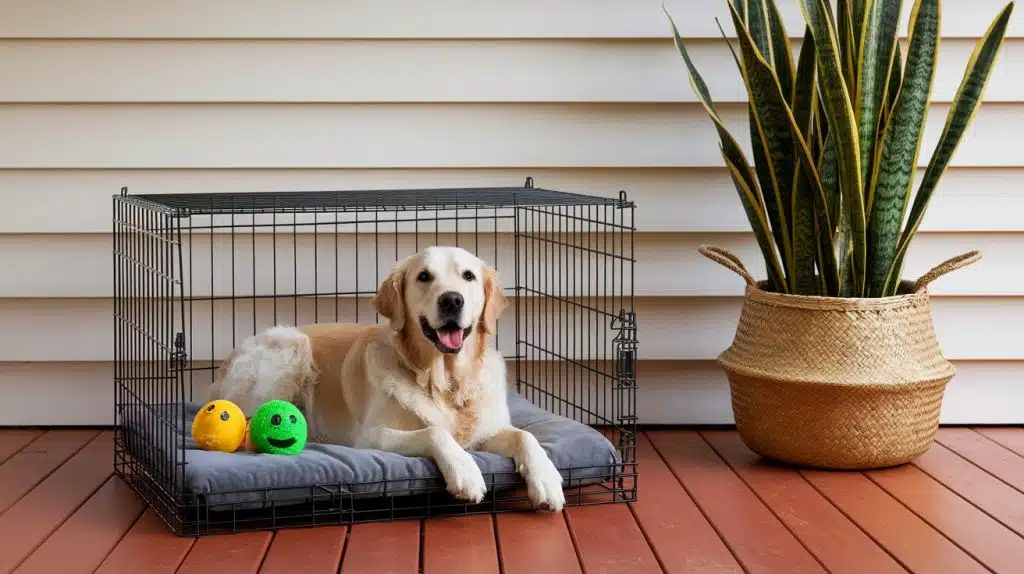When you start preparing your house for a dog, one of the most important things you look for is a comfortable crate.
Selecting the right dog crate can be tricky because many people get confused about what size to choose. I literally spent a week just to see the best crate for my Retriever.
A crate that is too big can make your dog lose its sense of security, while a crate that is too small can make it uncomfortable.
Choosing the correct size keeps your dog happy, relaxed, and safe in its own space.
I’ll help you understand how to select the perfect dog crate for your little one. I’ll also share a simple size chart to give you an easy idea of what a perfect dog crate should look like before you buy it.
Why Choosing the Correct Dog Crate Size Matters?
Choosing the correct crate size is important because it directly affects your dog’s comfort, safety, and behavior. A crate that is too small can make your dog feel trapped, leading to stress or restlessness.
A crate that is too large may cause your dog to feel unsafe and could make house training harder. When the size is just right, your dog can easily stand, turn, and stretch inside.
This helps your dog feel relaxed and secure in its space. A properly sized crate also makes traveling or training easier and prevents accidents or injuries.
Always remember that the right fit supports your dog’s physical comfort and emotional well-being every day.
Sample Dog Crate Sizing Chart
Here’s a sample chart you can refer to before purchasing a crate. It gives a general idea of crate sizes that fit different dog breeds.
Use it as a starting point to understand what size may suit your dog best.
| Height (in) | Weight (lbs) | Length (in) | Crate Size (Symbol) | Crate Dimensions (L×W×H, in) | Example Breeds |
|---|---|---|---|---|---|
| Up to 12 | Up to 15 | Up to 16 | Small (S) | 24 × 18 × 20 | Chihuahua, Maltese, Pomeranian |
| 13–18 | 16–30 | 17–22 | Medium (M) | 30 × 20 × 23 | Beagle, Miniature Schnauzer, Corgi |
| 19–24 | 31–50 | 23–28 | Intermediate (I) | 36 × 24 × 26 | Border Collie, Cocker Spaniel, Aussie Shepherd |
| 25–30 | 51–70 | 29–34 | Large (L) | 42 × 28 × 30 | Labrador Retriever, Golden Retriever, Boxer |
| 31–36 | 71–90 | 35–40 | Extra Large (XL) | 48 × 30 × 32 | German Shepherd, Rottweiler, Bernese Mountain Dog |
| 37+ | 91+ | 41+ | Extra Extra Large (XXL) | 54 × 37 × 45 | Great Dane, Mastiff, Saint Bernard |
While this table is for reference, always take personal measurements of your dog before buying to ensure a comfortable and secure fit.
How to Choose the Best Dog Crate?
Choosing the best crate for your dog means finding a balance between size, comfort, and function. Every dog is unique, so one crate size or style does not fit all.
1. Measuring Your Dog
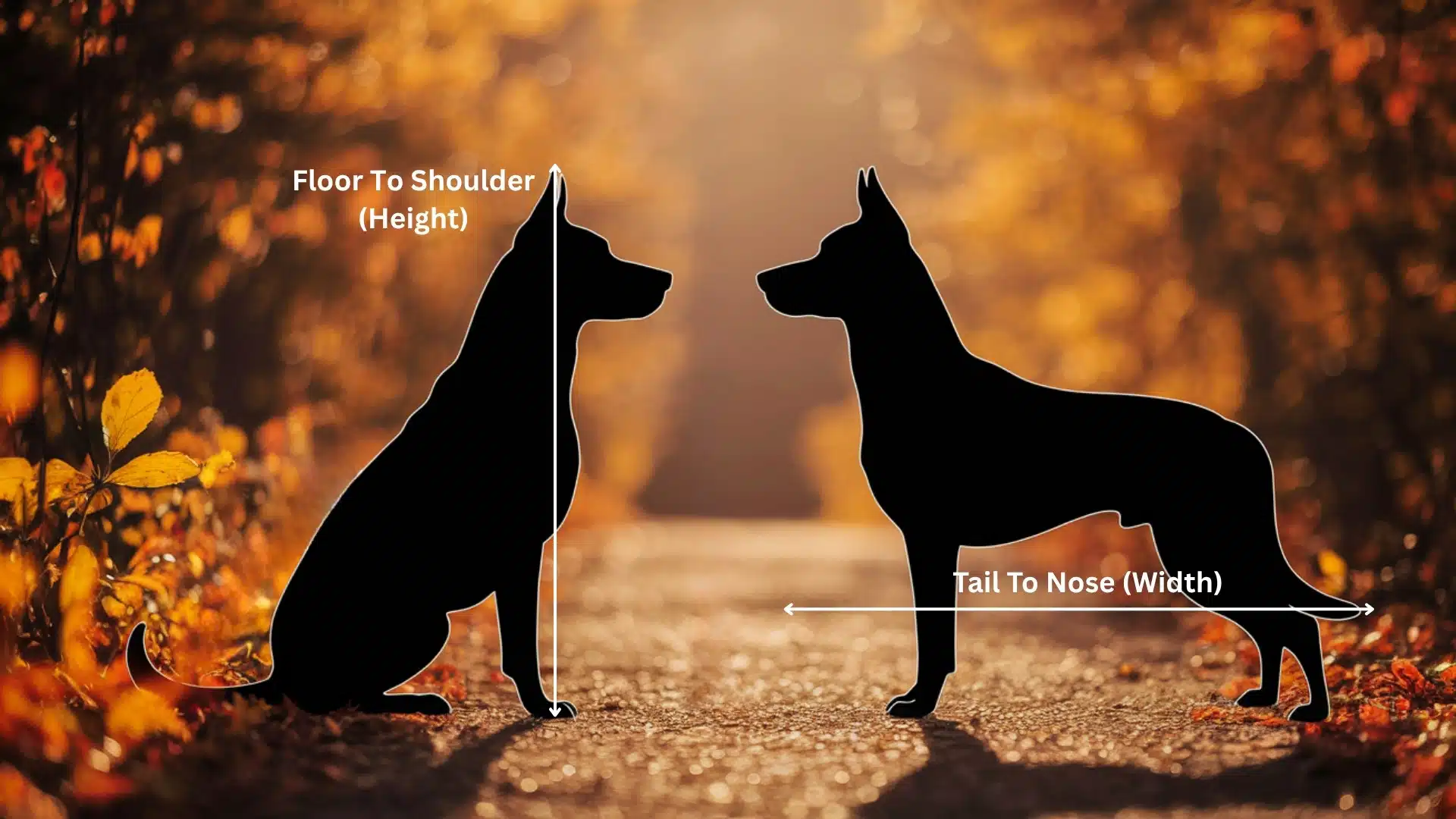
The most important step before choosing a crate is measuring your dog’s size and growth. Puppies grow fast, so the crate should fit both now and later.
Measure your dog’s length from nose to tail base and height from floor to shoulders. Note these measurements and add two to four extra inches for movement space.
Your dog should easily stand, turn, and lie down inside. Consider adding soft bedding or a small toy for comfort.
If your dog is still a puppy, use a crate with a divider panel to adjust space as it grows.
2. Types of Dog Cages
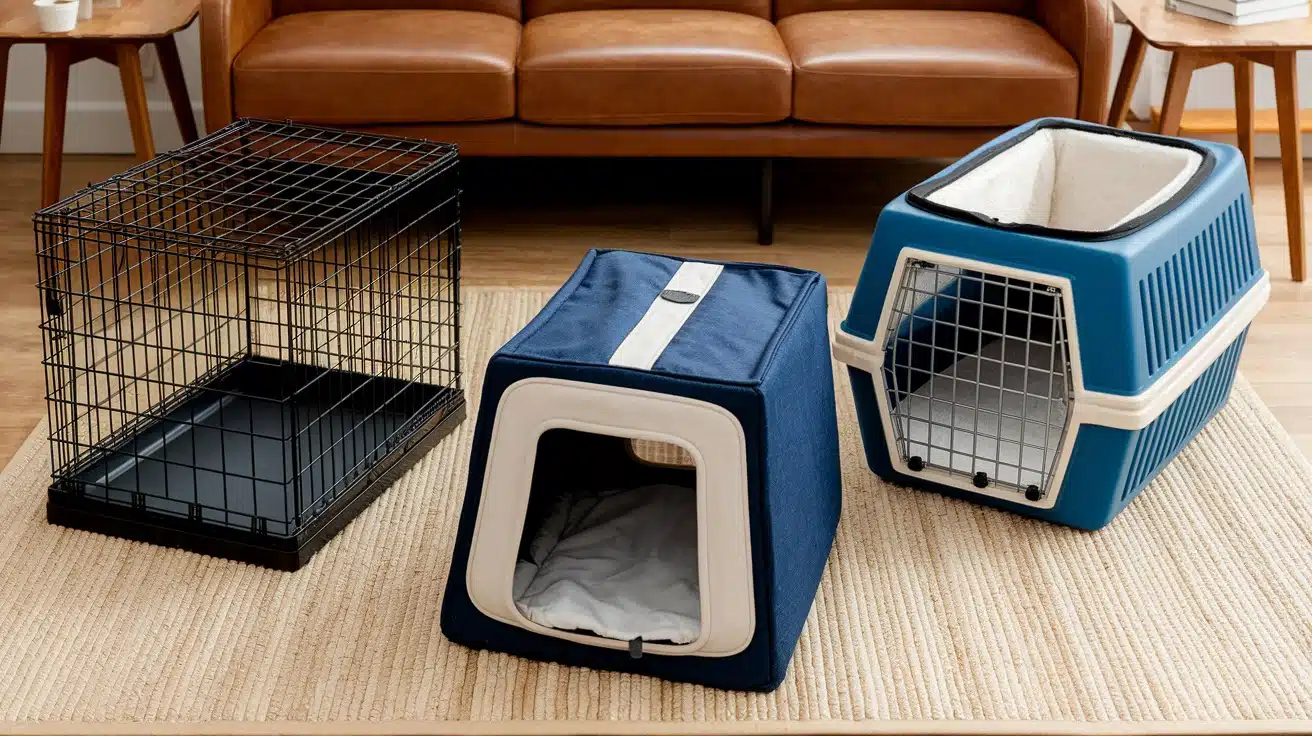
Different dogs have different needs, so crate type matters a lot. Here are some common kinds and their uses:
- Wire Crate: Best for home use. It gives fresh air and lets your dog see around. Great for calm or trained dogs.
- Plastic Crate: Sturdy and enclosed, it helps shy dogs feel safe. It also keeps them cozy in cooler weather.
- Soft-Sided Crate: Light and easy to move, good for small dogs or gentle pets that stay calm indoors.
- Heavy-Duty Crate: Built for large or strong dogs that chew or push hard. It gives strong security and lasts longer.
- Furniture-Style Crate: Looks like home furniture and blends with the room design. Ideal for small or relaxed pets.
Choosing the right type helps match your dog’s comfort level and your lifestyle, making crate time peaceful for both of you.
3. Comfort and Safety Features
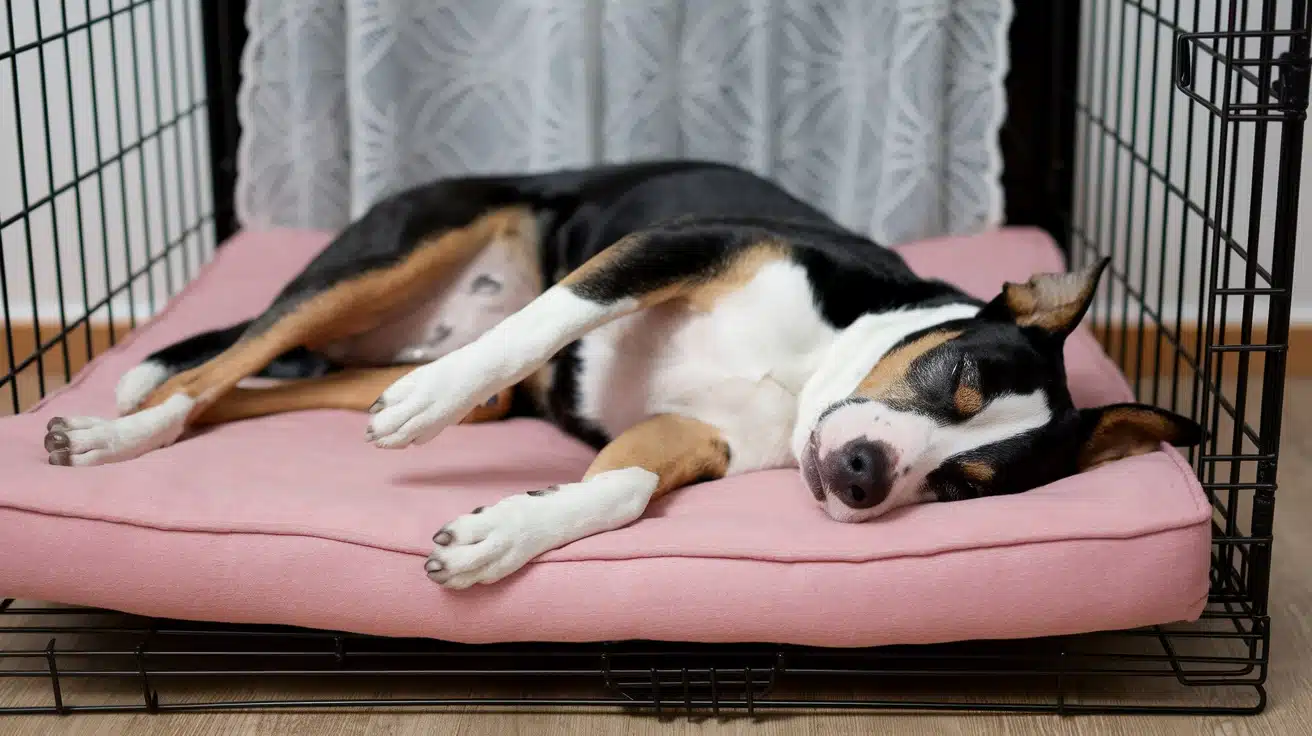
A crate should feel safe and cozy, not tight or plain. Choose one with good air openings and a secure door lock.
Add a soft mat or cushion to make resting easy. Check that the crate size matches your dog’s needs and gives enough headroom. For home use, pick a crate that fits your space and is easy to clean.
Paying attention to comfort and safety helps your dog enjoy the crate and stay relaxed at all times.
In short, for the dog, the crate should look like a remote home for him, just like we camp by using RVs.
Extra Considerations for Regular Travelers
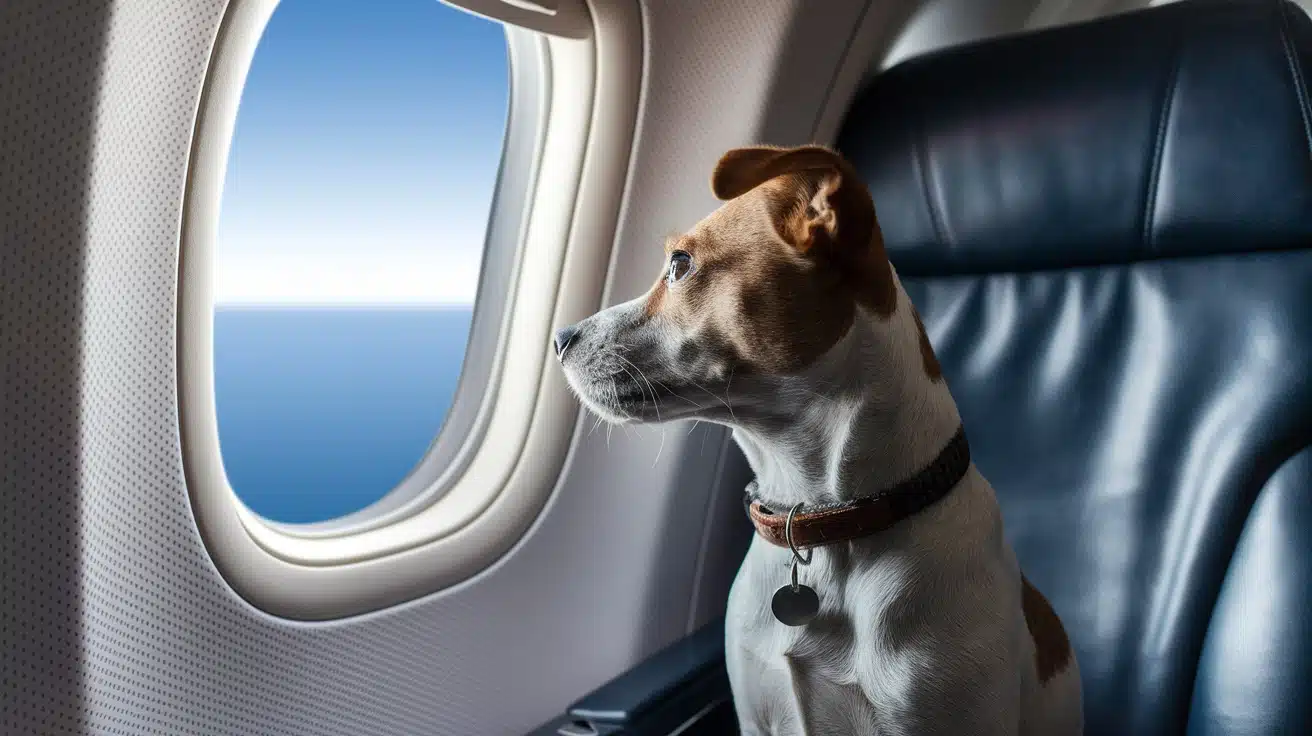
When traveling often with your dog, the right crate must meet both comfort and safety needs.
A travel crate should follow airline standards, stay strong through handling, and keep your pet secure while in transit. It must also be easy to clean and move.
Steps for Measuring Your Dog and Crate Material Rules
Before any flight, measuring your dog correctly helps you pick the right travel crate. Follow these steps for a safe and comfortable fit:
- Measure your dog’s length from the tip of the nose to the tail base and add a few inches for comfort.
- Measure the height from the floor to the top of the shoulders to ensure sufficient standing room.
- Ensure the crate allows your dog to sit, turn, and lie down naturally without touching the sides or top.
- Choose crates made of rigid plastic, metal, or wood with a grated metal door.
- Make sure it is leak-proof, escape-proof, and has ventilation on three sides for local travel and four for international trips.
These measurements and material choices ensure comfort and safety for your dog during air travel.
Basic Requirements of a Travel Crate
When selecting a crate for airline travel, several key features are required to meet safety and airline rules:
- The crate must let your dog stand, turn, and lie down comfortably.
- Doors must be strong and made from welded or cast metal that locks tightly.
- The crate should be solid, leak-proof, and escape-proof.
- Ensure there are openings for airflow on at least three sides for local flights and four for international flights.
- Secure food and water dishes must be placed inside.
- Attach a 24-hour food supply outside for easy access.
- Add absorbent padding inside, avoiding straw or wood shavings.
- Tighten all corners with cable ties from the airline.
- Label the crate with travel and identification tags.
These features help keep pets secure and cared for throughout the journey.
Traveling with Multiple Pets
When traveling with more than one dog, airlines allow shared crates only in special cases.
Both pets must be of the same species and similar size, with each weighing under 20 lbs. They should also be between 8 weeks and 6 months old.
Larger or older dogs must travel in separate crates to ensure safety and follow airline policies.
Check out the official website of American Airlines Cargo to see the full rules and use their kennel size calculator, which provides a helpful guide to choosing the perfect-sized kennel for your pet’s next trip.
Special Considerations While Choosing a Dog Crate
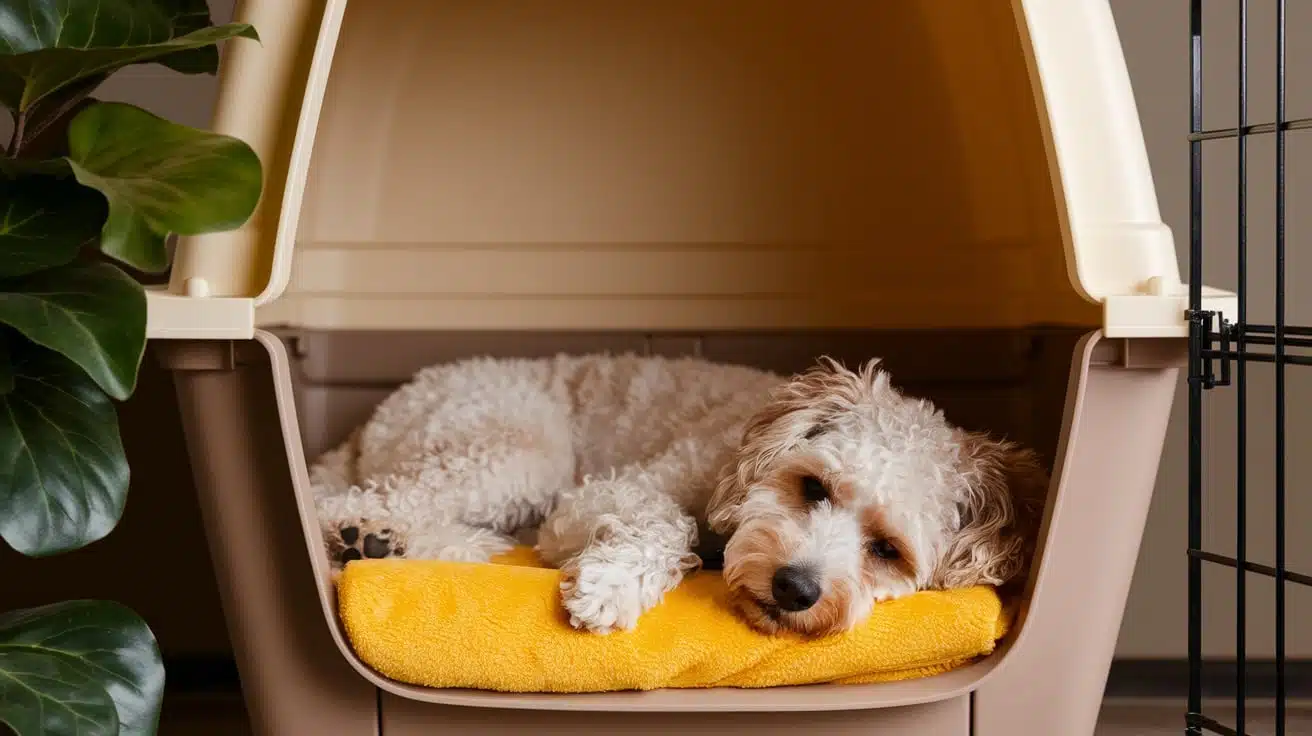
While selecting a crate, consider a few extra points that can improve your dog’s comfort and safety:
- Pick a crate with smooth edges to prevent scratches or injuries.
- Choose easy-to-clean materials to maintain hygiene and remove odors.
- Make sure there is enough airflow and visibility for comfort.
- Use a divider for puppies that will grow quickly.
- Avoid placing the crate in direct sunlight or cold drafts.
- Add soft bedding or padding to make resting easy.
- Keep a familiar toy or blanket inside to reduce anxiety.
- Select a secure latch system to prevent escapes.
Keeping these simple points in mind helps you choose a crate that suits your dog’s needs and keeps them happy and safe at home.
Conclusion
Now you know how to select the perfect-sized dog crate for your furry friend and make them feel safe and comfortable.
At first, all the measurements, types, and crate rules might seem confusing, but soon, it will feel simple once you understand your dog’s needs.
Always remember to avoid choosing a crate that is too small or too large, as both can make your dog uncomfortable and anxious.
Once you bring the right crate home, spend time training your dog to feel relaxed and happy inside it.
Remember, a crate is not just a closed area but a portable home where your pet feels protected and loved.
Which dog breed are you going to buy a crate for? Tell us in the comments below.


